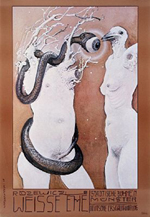
Duncan Watts is stirring it up. Fast Company asks “Is The Tipping Point Toast?” Just when everyone had internalized the Tipping Point and the meme of Influentials playing a key role in the distribution of ideas/trends through the network by virtue of their extra large social graphs and reputations. We like the idea of being able to influence the influencers through public relations or marketing projects. We design communications plans to advertise to the special few who are connected to and influence large numbers of people. In a conference room somewhere, someone is designing an ad campaign to appeal specifically to Robert Scoble.

Watts has created computer models that show that Influentials aren’t key to a trend’s tipping point. Although he does show that they have the effect of magnifying the reach of a trend through the network. Mass marketing that automates sharing will permeate a network through ordinary nodes more often than through influential nodes. The tipping point is the readiness of the network to accept a new trend. Apple’s new MacBook Air is a good example. Influentials like Jason Calacanis and Mike Arrington have stated that they will buy and use the Air. If the MB Air is ahead of the market’s readiness for it, will it make a difference who endorses it? A viral trend contained to early adopters is not a trend.
Is the network ready for the idea that Influentials aren’t as influential as we think? I’m putting that meme out on another node, but how did it get to me? I found it via Del.icio.us, I subscribe to Jeremy Keith‘s bookmark flow. I look at what other people bookmark. I added the link to my bookmark flow and clicked over to the article and read about half of it. I forwarded the link to a few people that I thought might find it interesting. This morning during my regular Sunday visit to the news stand I saw a copy of Fast Company magazine with the same article. I bought a copy, and read it all the way through before composing this post. But this idea/meme isn’t a good candidate for trend status. It’s only interesting to a small subset.
Comments closed
